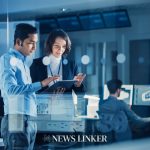Recent observations by NASA revealed two unusually shaped asteroids, resembling oversized peanuts, passing near Earth. The near-Earth asteroid 2024 ON approached our planet on September 16, 2024, coming within one million kilometers. This peculiar find marks a significant aspect of ongoing asteroid monitoring efforts, aimed at understanding and tracking potentially hazardous celestial bodies.
What is the size and shape of 2024 ON?
Asteroid 2024 ON measures approximately 350 meters in length and is classified as a contact binary. Radar imaging showcased its unique peanut shape, formed by two smaller objects touching each other. One of the lobes is notably larger, contributing to its distinct appearance.
What were the findings from radar imagery?
The radar technology used to examine 2024 ON allowed scientists to identify surface features down to 3.75 meters. These observations indicated that a significant portion of asteroids larger than 200 meters are contact binaries, establishing a commonality among such celestial bodies.
How does NASA study these asteroids?
The Goldstone Solar System Radar in California significantly contributes to asteroid studies using planetary radar techniques. By sending radar signals toward asteroids and analyzing the reflected signals, astronomers gather critical data regarding their size, shape, and trajectory. Such techniques are crucial for monitoring and assessing potential threats to Earth.
Recent approaches to tracking near-Earth objects have seen an increase in the utilization of advanced radar technology. The focus has sharpened on classifying asteroids based on their physical properties and establishing ongoing monitoring systems for those categorized as potentially hazardous. This has become particularly relevant as the prediction models and radar capabilities evolve, fostering better preparedness for future encounters.
2024 ON was initially identified by the Asteroid Terrestrial-impact Last Alert System at Mauna Loa in Hawaii in late July. Meanwhile, the earlier peanut-shaped asteroid, 2024 JV33, was detected on August 18-19, 2024, highlighting a series of significant findings that have emerged within a short span. Both asteroids are subject to scrutiny, as scientific institutions aim to better assess their trajectories and any potential hazards they may present in the future.
NASA officially categorizes objects of this size and proximity as potentially hazardous, although there are currently no predictions suggesting imminent danger from either asteroid. Comprehensive monitoring strategies are in place, ensuring continuous assessment for future risks. By understanding the physical characteristics of such asteroids, astronomers enhance their capability to predict possible impacts, furthering planetary defense initiatives.










